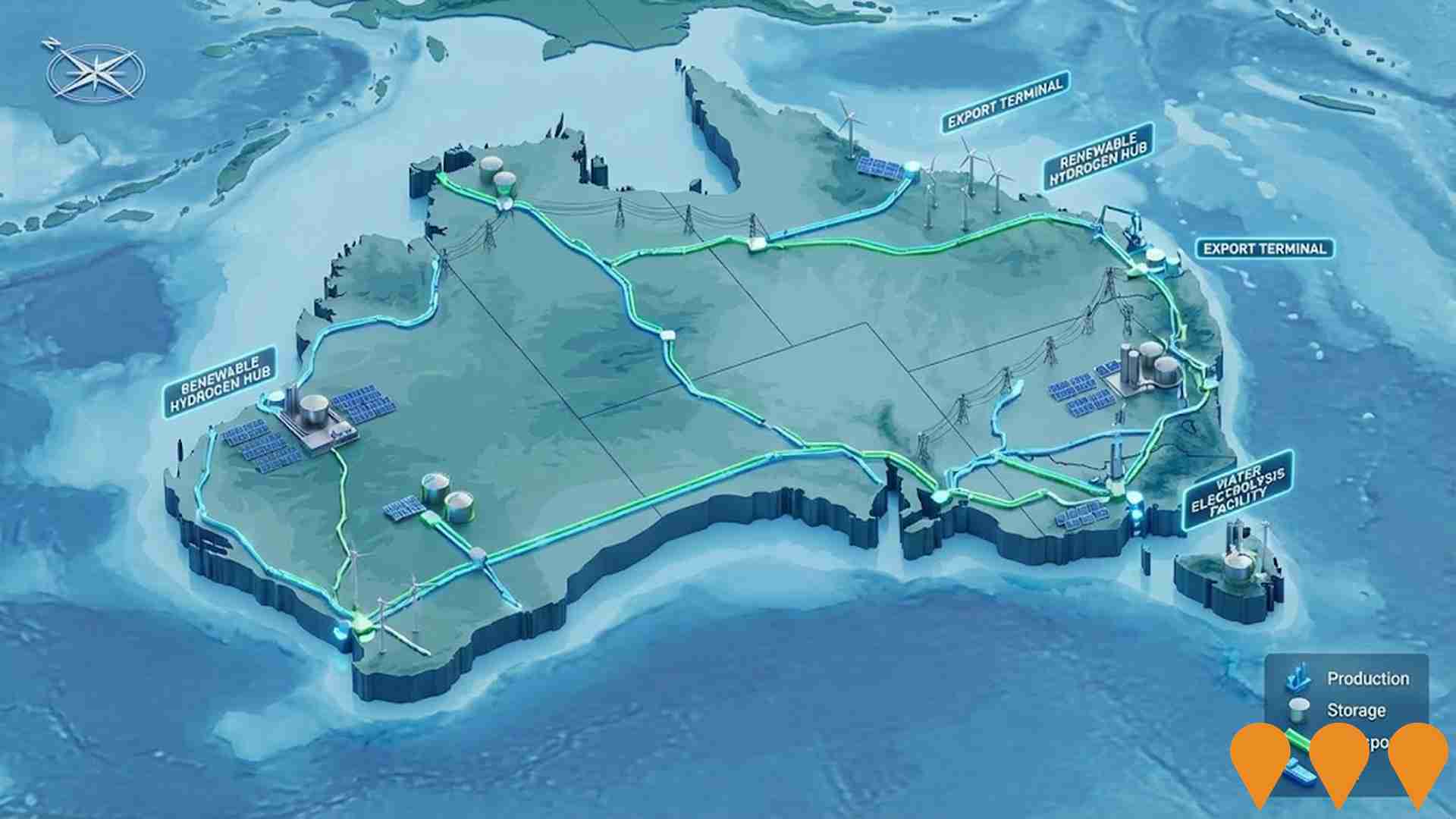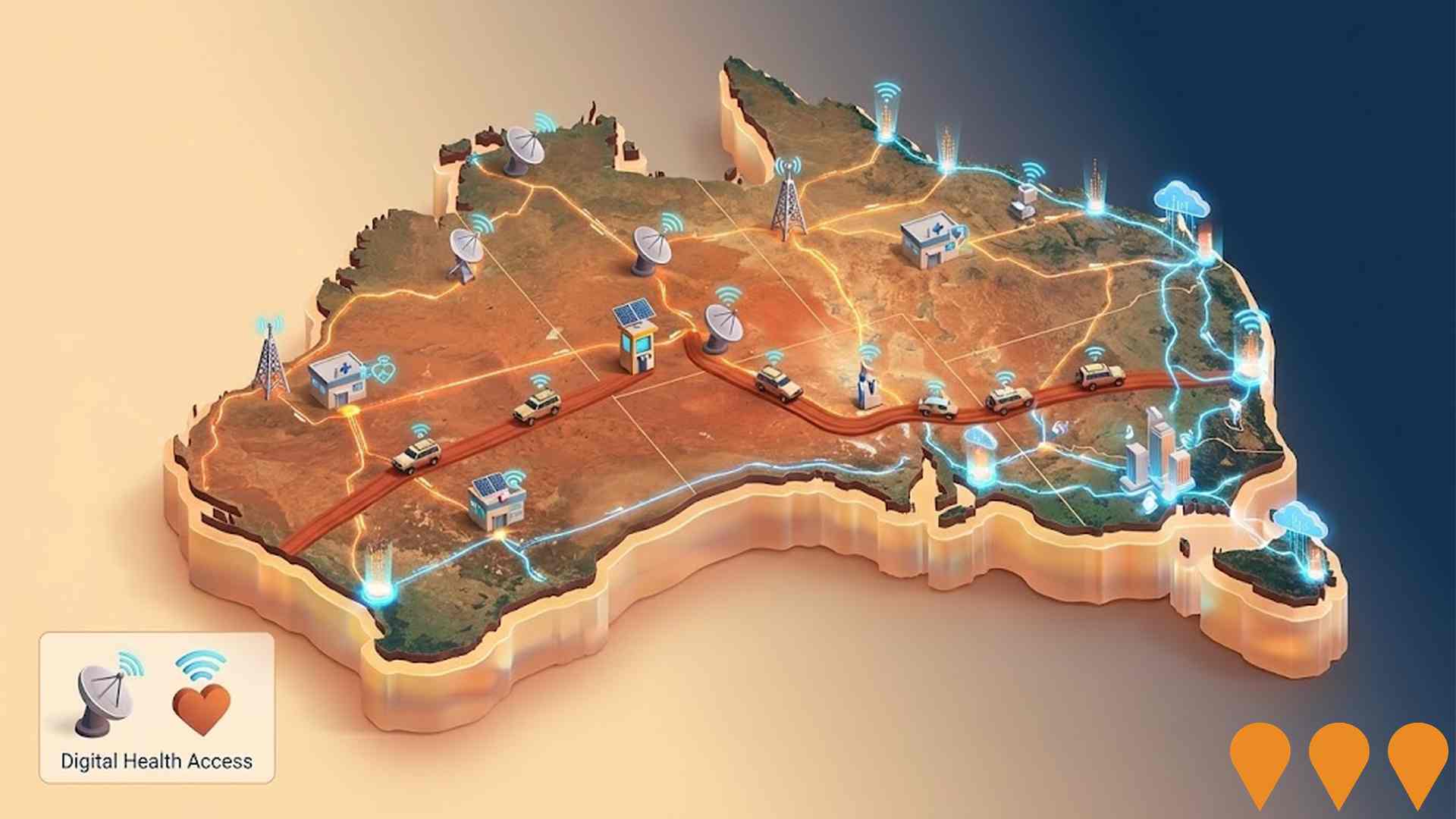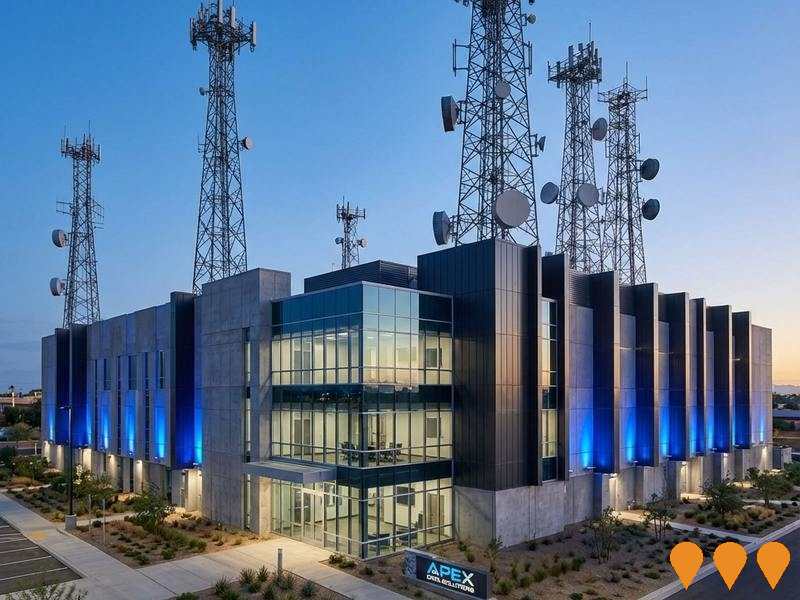Chart Color Schemes
est. as @ -- *
ABS ERP | -- people | --
2021 Census | -- people
Sales Activity
Curious about local property values? Filter the chart to assess the volume and appreciation (including resales) trends and regional comparisons, or scroll to the map below view this information at an individual property level.
Find a Recent Sale
Sales Detail
Population
Le Hunte - Elliston has shown very soft population growth performance across periods assessed by AreaSearch
Based on AreaSearch's analysis, Le Hunte - Elliston's population is around 2,201 as of Aug 2025. This reflects an increase of 79 people since the 2021 Census which reported a population of 2,122 people. The change was inferred from the estimated resident population of 2,197 in June 2024 and an additional 26 validated new addresses since the Census date. This level of population equates to a density ratio of 0.20 persons per square kilometer. Le Hunte - Elliston's growth rate of 3.7% since census positions it within 1.1 percentage points of the SA4 region (4.8%), indicating competitive growth fundamentals. Population growth was primarily driven by overseas migration during recent periods.
AreaSearch adopts ABS/Geoscience Australia projections for each SA2 area, released in 2024 with a base year of 2022. For areas not covered and years post-2032, the SA State Government's Regional/LGA projections are adopted, based on 2021 data and released in 2023, with adjustments made using weighted aggregation methods. Considering projected demographic shifts, a population increase just below Australia's non-metropolitan median is expected by 2041, with an increase of 141 persons and a total growth rate of 6.2% over the 17 years.
Frequently Asked Questions - Population
Development
Residential development activity is lower than average in Le Hunte - Elliston according to AreaSearch's national comparison of local real estate markets
Le Hunte - Elliston has averaged approximately 9 new dwelling approvals per year over the past five financial years ending June 2021, totalling 49 homes. As of February 2026, 2 approvals have been recorded in this financial year. The area's population decline has maintained adequate housing supply relative to demand, resulting in a balanced market with good buyer choice. New homes are being built at an average expected construction cost value of $308,000, which is below the regional average, suggesting more affordable housing options for buyers.
This financial year has seen $4.8 million in commercial approvals, reflecting the area's primarily residential nature. Compared to the Rest of SA region, Le Hunte - Elliston shows moderately higher building activity, with 40.0% above the regional average per person over the five-year period ending June 2021. This has preserved reasonable buyer options while sustaining existing property demand.
All recent building activity consists of detached dwellings, preserving the area's low density nature and attracting space-seeking buyers. The location currently has approximately 175 people per dwelling approval, indicating a low density market. Looking ahead, Le Hunte - Elliston is projected to grow by 137 residents through to 2041. At current development rates, new housing supply should comfortably meet demand, providing good conditions for buyers and potentially supporting growth beyond current population projections.
Frequently Asked Questions - Development
Infrastructure
Le Hunte - Elliston has emerging levels of nearby infrastructure activity, ranking in the 26thth percentile nationally
No factors influence a region's performance more than local infrastructure changes, major projects, and planning initiatives. AreaSearch has identified zero projects that could impact this area. Key projects include South Australian Road Network Maintenance, South Australia High Productivity Vehicle Network Access, SA Public Housing Maintenance and Services Contracts, and SA Water Capital Work Delivery Contracts, with the following list outlining those most relevant.
Professional plan users can use the search below to filter and access additional projects.
INFRASTRUCTURE SEARCH
 Denotes AI-based impression for illustrative purposes only, not to be taken as definitive under any circumstances. Please follow links and conduct other investigations from the project's source for actual imagery. Developers and project owners wishing us to use original imagery please Contact Us and we will do so.
Denotes AI-based impression for illustrative purposes only, not to be taken as definitive under any circumstances. Please follow links and conduct other investigations from the project's source for actual imagery. Developers and project owners wishing us to use original imagery please Contact Us and we will do so.
Frequently Asked Questions - Infrastructure
Enabling Infrastructure for Hydrogen Production
Australia has completed the National Hydrogen Infrastructure Assessment (NHIA) to 2050 and refreshed its National Hydrogen Strategy (2024). The programmatic focus has shifted to planning and enabling infrastructure through measures such as ARENA's Hydrogen Headstart and the Hydrogen Production Tax Incentive (from April 2025). Round 2 of Hydrogen Headstart consultation occurred in 2025. Collectively these actions aim to coordinate investment in transport, storage, water and electricity inputs linked to Renewable Energy Zones and priority hubs, supporting large-scale renewable hydrogen production and future export supply chains.

Enabling Digital Health Services for Regional and Remote Australia
National initiative to expand and improve digital health access for people in regional and remote Australia. Focus areas include enabling telehealth and virtual care, upgrading clinical systems and connectivity, supporting secure information exchange, and building workforce capability in digital health, aligned with the Australian Government's Digital Health Blueprint and Action Plan 2023-2033.

Bulk Water Supply Security
Nationwide program led by the National Water Grid Authority to improve bulk water security and reliability for non-potable and productive uses. Activities include strategic planning, science and business cases, and funding of state and territory projects such as storages, pipelines, dam upgrades, recycled water and efficiency upgrades to build drought resilience and support regional communities, industry and the environment.

National EV Charging Network (Highway Fast Charging)
Partnership between the Australian Government and NRMA to deliver a backbone EV fast charging network on national highways. Program funds and co-funds 117 DC fast charging sites at roughly 150 km intervals to connect all capital cities and regional routes, reducing range anxiety and supporting EV uptake.

Network Optimisation Program - Roads
A national program concept focused on improving congestion and reliability on urban road networks by using low-cost operational measures and technology (e.g., signal timing, intersection treatments, incident management) to optimise existing capacity across major city corridors.

South Australian Road Network Maintenance
An initiative to address the growing backlog in maintenance on South Australia's roads, aiming to enhance safety, reduce costs for users, and ensure road network resilience through strategic investment.

South Australia High Productivity Vehicle Network Access
Expanding South Australia's road freight network for larger High Productivity Vehicles to enhance safety, reduce transport costs, and improve economic productivity through infrastructure upgrades like improved road geometry and bridge capacities.

SA Public Housing Maintenance and Services Contracts
The South Australian Government has awarded three maintenance service contracts to Spotless Facility Services, RTC Facilities Maintenance, and Torrens Facility Management for the upkeep of over 33,000 public housing properties statewide. Valued at approximately $900 million, the contracts cover reactive maintenance, vacant restorations, and minor works across six regions. Commencing January 2023 for 5.5 years with a two-year extension option, a 2024 review identified issues like trade shortages and below-market rates, leading to an additional $37.1 million funding to accelerate vacancy maintenance.

Employment
Employment conditions in Le Hunte - Elliston demonstrate strong performance, ranking among the top 35% of areas assessed nationally
Le Hunte - Elliston has a balanced workforce with diverse sector representation. The unemployment rate in June 2025 was 3.1%.
This is lower than the Rest of SA's rate of 4.6%, which is 1.5% higher. Employment growth over the past year was estimated at 5.0%. As of June 2025, 1,178 residents are in work and workforce participation is 61.2%, compared to Rest of SA's 54.1%. Key industries include agriculture, forestry & fishing, health care & social assistance, and education & training.
The area specializes in agriculture, forestry & fishing with an employment share 2.9 times the regional level. However, manufacturing is under-represented at 1.6%, compared to Rest of SA's 9.3%. Many residents commute elsewhere for work based on Census data. In the 12-month period ending June 2025, employment increased by 5.0% while unemployment rose by 0.9 percentage points. National employment forecasts from Jobs and Skills Australia, released in May 2025, project national growth of 6.6% over five years and 13.7% over ten years. Applying these projections to Le Hunte - Elliston's employment mix suggests local growth of approximately 4.8% over five years and 10.9% over ten years.
Frequently Asked Questions - Employment
Income
Income figures position the area below 75% of locations analysed nationally by AreaSearch
Le Hunte - Elliston's median income among taxpayers was $47,824 in financial year 2022. The average income stood at $56,994 during the same period. This compares to figures for Rest of SA which were $46,889 and $56,582 respectively. Based on Wage Price Index growth of 12.83% since financial year 2022, current estimates would be approximately $53,960 (median) and $64,306 (average) as of September 2025. According to Census 2021 income data, personal income ranks at the 35th percentile ($734 weekly), while household income sits at the 16th percentile. The earnings profile shows that the $1,500 - 2,999 earnings band captures 29.8% of the community (655 individuals). Housing costs are modest with 93.7% of income retained, however the total disposable income ranks at just the 27th percentile nationally.
Frequently Asked Questions - Income
Housing
Le Hunte - Elliston is characterized by a predominantly suburban housing profile, with above-average rates of outright home ownership
Dwelling structure in Le Hunte - Elliston, as per the latest Census, consisted of 97.2% houses and 2.8% other dwellings (semi-detached, apartments, 'other' dwellings). In comparison, Non-Metro SA had 75.9% houses and 24.1% other dwellings. Home ownership in Le Hunte - Elliston was at 56.3%, with mortgaged dwellings at 23.6% and rented ones at 20.1%. The median monthly mortgage repayment was $867, lower than Non-Metro SA's average of $1,170. Weekly rent in Le Hunte - Elliston was recorded at $150, compared to Non-Metro SA's $195. Nationally, mortgage repayments were significantly lower at $1,863 and rents substantially below the national figure of $375.
Frequently Asked Questions - Housing
Household Composition
Le Hunte - Elliston features high concentrations of lone person households, with a fairly typical median household size
Family households account for 65.9% of all households, consisting of 26.3% couples with children, 32.9% couples without children, and 5.1% single parent families. Non-family households constitute the remaining 34.1%, with lone person households at 32.1% and group households comprising 1.9% of the total. The median household size is 2.3 people, which aligns with the average for the Rest of South Africa.
Frequently Asked Questions - Households
Local Schools & Education
Le Hunte - Elliston faces educational challenges, with performance metrics placing it in the bottom quartile of areas assessed nationally
The area's university qualification rate is 13.2%, significantly lower than the Australian average of 30.4%. This presents both a challenge and an opportunity for targeted educational initiatives. Bachelor degrees are the most common at 10.6%, followed by graduate diplomas (1.5%) and postgraduate qualifications (1.1%). Vocational credentials are also prevalent, with 35.6% of residents aged 15+ holding them - advanced diplomas account for 8.7% and certificates for 26.9%.
Educational participation is high, with 29.3% of residents currently enrolled in formal education. This includes 15.5% in primary education, 8.1% in secondary education, and 1.3% pursuing tertiary education. Le Hunte - Elliston has 4 schools with a combined enrollment of 385 students as of the latest data. The area's school conditions are typical of Australia (ICSEA: 972), offering balanced educational opportunities. All 4 schools provide integrated K-12 education, ensuring continuity throughout students' academic journey.
Frequently Asked Questions - Education
Schools Detail
Nearby Services & Amenities
Transport
No public transport data available for this catchment area.
Frequently Asked Questions - Transport
Transport Stops Detail
Health
Le Hunte - Elliston's residents are relatively healthy in comparison to broader Australia with a fairly standard level of common health conditions seen across both young and old age cohorts
Le Hunte-Elliston's health metrics closely match national benchmarks, with common health conditions seen across both young and old age groups at a standard level. Private health cover is found to be very low, approximately 48% of the total population (~1,063 people), compared to the national average of 55.3%.
The most prevalent medical conditions are arthritis (affecting 8.7% of residents) and asthma (7.5%), while 69.2% report having no medical ailments, compared to 65.6% in the rest of South Australia. As of 2021, 21.3% of residents are aged 65 and over (469 people). Health outcomes among seniors are notably strong, outperforming those of the general population in health metrics.
Frequently Asked Questions - Health
Cultural Diversity
The latest Census data sees Le Hunte - Elliston placing among the least culturally diverse areas in the country when compared across a range of language and cultural background related metrics
Le Hunte-Elliston was found to have low cultural diversity, with 89.5% of its population being citizens born in Australia who speak English only at home. Christianity is the predominant religion, comprising 53.3%, compared to 43.7% across Rest of SA. The top three ancestry groups are Australian (36.0%), English (30.4%), and German (9.1%).
Notably, Lebanese people make up 0.3% of Le Hunte-Elliston's population, higher than the regional average of 0.1%. Australian Aboriginal people comprise 2.4%, lower than the regional average of 4.8%, while Scottish people make up 7.7%, slightly higher than the regional average of 7.4%.
Frequently Asked Questions - Diversity
Age
Le Hunte - Elliston hosts an older demographic, ranking in the top quartile nationwide
Le Hunte - Elliston's median age as of 2021 is 44 years, which is slightly younger than Rest of SA's 47 but significantly higher than Australia's median age of 38. The age profile shows that the 5-14 year-olds make up 14.6% of the population, while the 75-84 group constitutes only 5.8%. Post-2021 Census data indicates that the 15 to 24 age group has grown from 8.1% to 11.5%, and the 35 to 44 cohort has increased from 11.5% to 12.7%. Conversely, the 55 to 64 cohort has declined from 17.1% to 15.0%, and the 25 to 34 group has dropped from 10.4% to 8.8%. Demographic modeling suggests that Le Hunte - Elliston's age profile will change significantly by 2041. The 75 to 84 age cohort is projected to grow steadily, increasing by 57 people (45%) from 126 to 184. However, population declines are projected for the 5-14 and 65 to 74 cohorts.

